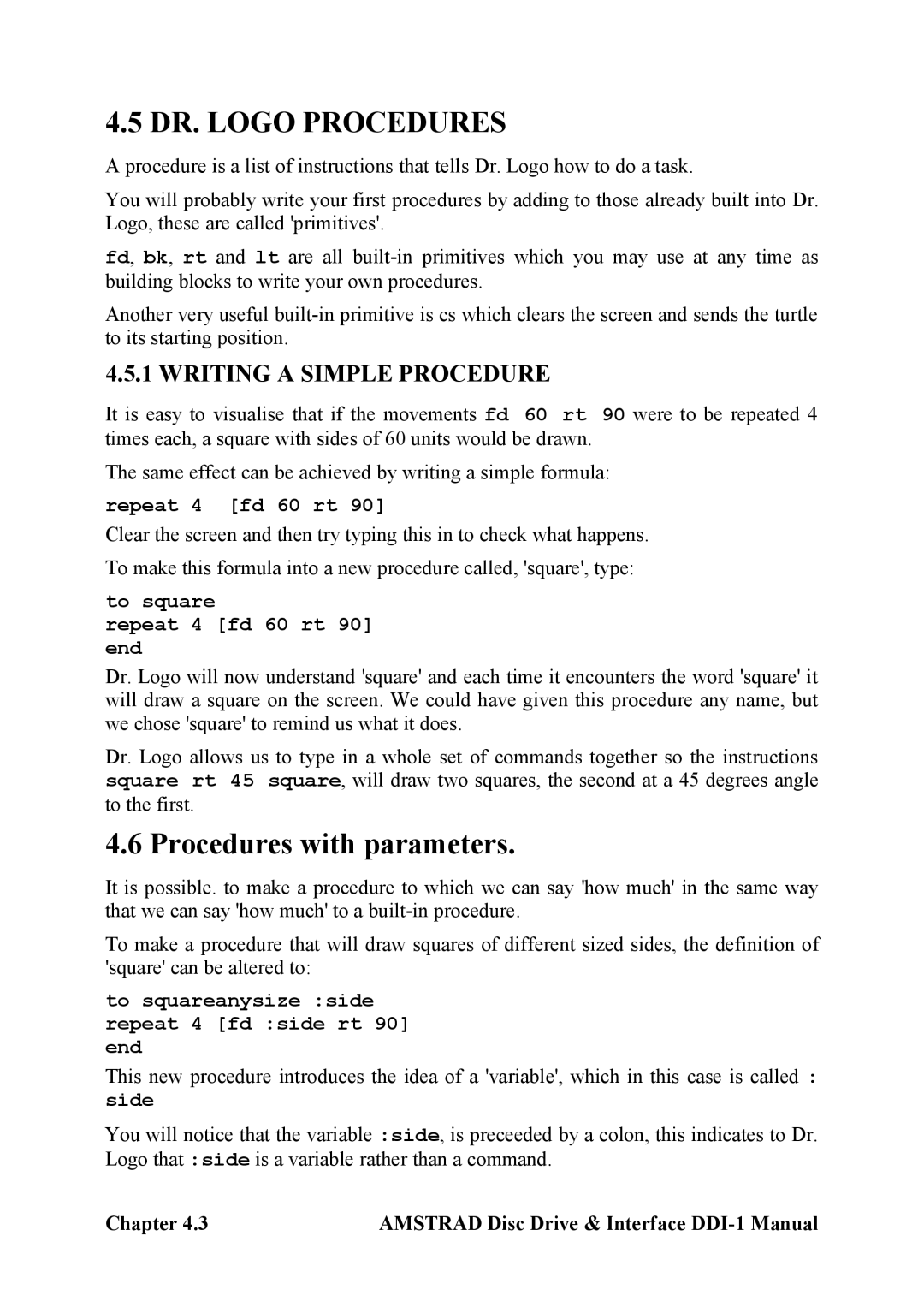4.5 DR. LOGO PROCEDURES
A procedure is a list of instructions that tells Dr. Logo how to do a task.
You will probably write your first procedures by adding to those already built into Dr. Logo, these are called 'primitives'.
fd, bk, rt and lt are all
Another very useful
4.5.1 WRITING A SIMPLE PROCEDURE
It is easy to visualise that if the movements fd 60 rt 90 were to be repeated 4 times each, a square with sides of 60 units would be drawn.
The same effect can be achieved by writing a simple formula:
repeat 4 [fd 60 rt 90]
Clear the screen and then try typing this in to check what happens. To make this formula into a new procedure called, 'square', type:
to square
repeat 4 [fd 60 rt 90] end
Dr. Logo will now understand 'square' and each time it encounters the word 'square' it will draw a square on the screen. We could have given this procedure any name, but we chose 'square' to remind us what it does.
Dr. Logo allows us to type in a whole set of commands together so the instructions square rt 45 square, will draw two squares, the second at a 45 degrees angle to the first.
4.6 Procedures with parameters.
It is possible. to make a procedure to which we can say 'how much' in the same way that we can say 'how much' to a
To make a procedure that will draw squares of different sized sides, the definition of 'square' can be altered to:
to squareanysize :side repeat 4 [fd :side rt 90] end
This new procedure introduces the idea of a 'variable', which in this case is called : side
You will notice that the variable :side, is preceeded by a colon, this indicates to Dr. Logo that :side is a variable rather than a command.
Chapter 4.3 | AMSTRAD Disc Drive & Interface |
